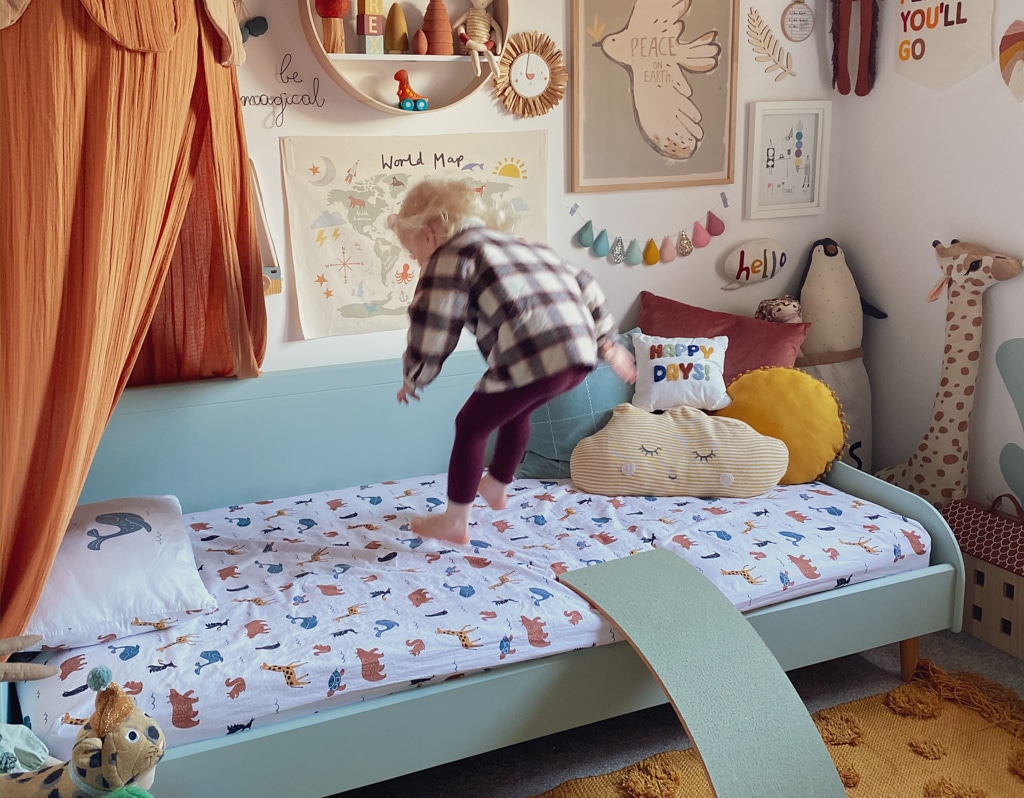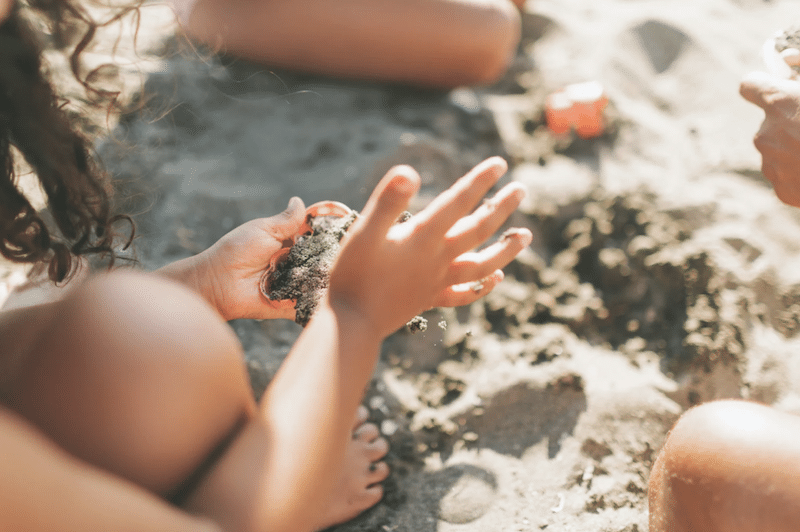Why should we, as parents, pay special attention to coordination-based physical activities? After all, young children are naturally active, aren’t they? If we spend more time on numbers and letters, children will make greater progress, right?
Well… this is a common misconception we might have.
By reading this article, you’ll discover that something as simple as throwing a ball or your little one’s playful antics on the couch are fundamental building blocks for their future development across multiple areas!
You’ll also find simple and fun coordination exercises perfect for little one’s—focused on precise limb control (hand-eye motor skills) and toddler balance training—that you can easily incorporate to support their physical development and overall growth.
Why Coordination Exercises Are Key to Toddler Development
Motor coordination plays a fundamental role in the physical development of children. It enhances existing motor skills, facilitates overcoming new physical challenges, and lays the groundwork for learning sports in the future. However, practicing coordination in toddlers goes far beyond the immediately visible benefits for physical development.
Following Piaget’s theory, we see that motor skills are the starting point for intellectual development. We cannot talk about the preoperational stage and concrete operations without the sensorimotor stage.
What does this mean? Children build their knowledge and skills through the coexistence of physical and mental activity.During the first two years of life, they explore the world almost exclusively through movement and senses. To support their harmonious development, it is essential to provide an environment that encourages them to test and refine their physical abilities.
Do you want your child to thrive in preschool and later in school? Without a stable core, a good sense of balance and eyes that confidently track the movement of the hand, mark-making and, later, writing are impossible. Without a sense of the body’s position in space, pointing a finger to count objects is equally so.

Building Hand-Eye Motor Skills Through Play
Hand-eye coordination is the ability to perform tasks that require the simultaneous use of hands and eyes. It involves processing visual information provided by the eyes and translating it into precise, controlled hand movements. This skill is crucial for activities such as writing, driving, or playing musical instruments.
Here are a few simple and fun activities to help improve hand-eye motor skills:
- Throwing and catching a ball – Use light, soft balls so your child can practice throwing at a target or catching.
- Pouring grains – Give your child small cups and seeds (e.g., beans) to pour from one container to another.
- Building a block tower – Stacking blocks teaches your child to plan movements, focus, and work with precision.
- Drawing – By creating abstract shapes or patterns, children enhance their coordination. Simple coloring, drawing, and painting are excellent coordination exercises.
- Puzzles – Introduce age-appropriate puzzles with large, sturdy pieces. As your child manipulates and fits the pieces into the correct spaces, they develop both hand-eye motor skills and fine motor skills.

Fun Ways to Improve Toddler Balance and Stability
Encourage your child to engage in balance-focused activities that introduce new forms of movement. You can do this without leaving the house or purchasing new gym equipment. Here are a few simple ways to support your toddler’s balance development:
- Walking on a line – Draw a line on the floor with chalk or use tape, and have your child walk along it, trying to stay on the line.
- One-leg games – Challenge your child to stand on one leg for a few seconds. Make it fun with games, like seeing who can “be a stork” the longest!
- Jumping on cushions – Place a few cushions or mats on the floor and have your child jump from one to another.
- Playground fun – Swings, slides, and merry-go-rounds are great for younger toddlers who may not yet be able to perform complex movements independently.
- Family fun – If there’s no playground nearby or the weather isn’t ideal, don’t worry. You can achieve the same results by gently throwing your child up into the air, rocking them in your arms, or—if they’re brave enough—spinning them around.
- Homemade obstacle course – Create a simple obstacle course indoors or in the yard using cushions, boxes, or stools. Your child can crawl, jump, or climb through the course.
You can find more about toddler balance and the comprehensive development of motor skills in toddlers in our course, A Year With My Child.

Supporting Physical Development with Engaging Activities
When nurturing healthy physical development and comprehensive growth in toddlers, it’s a good idea to introduce a variety of coordination exercises by practicing hand-eye motor skills and toddler balance.
Experiment with your own ideas—they don’t have to be complicated. Sometimes, simply moving a chair can make your child see the room in a whole new light and discover opportunities to test their balance. Just make sure to stay nearby.
If you’re looking for even more ideas or simply want to dive deeper into the topics discussed, be sure to check out our articles dedicated to hand-eye coordination games and balance activities.
I also encourage you to involve your child in household tasks such as unloading the dishwasher, mopping the floor, or hanging laundry. For toddlers, almost anything can become a fun, coordination-boosting activity!





